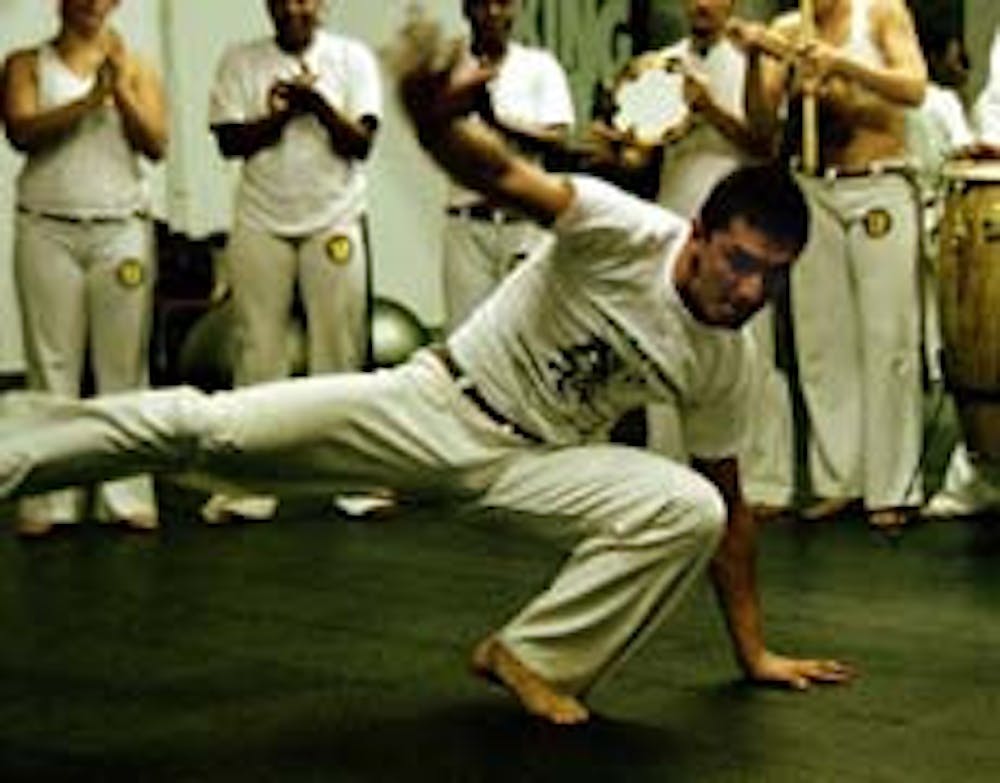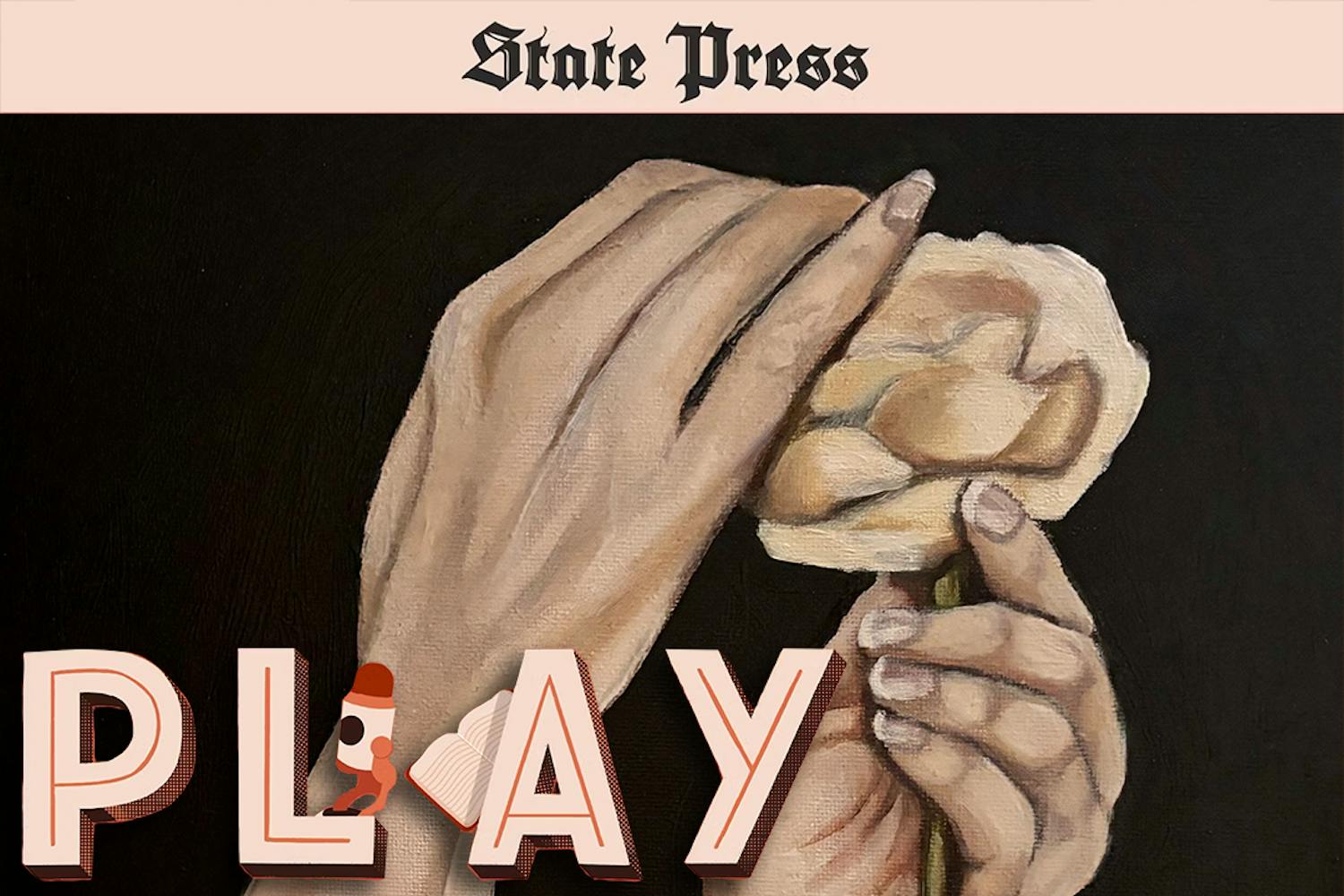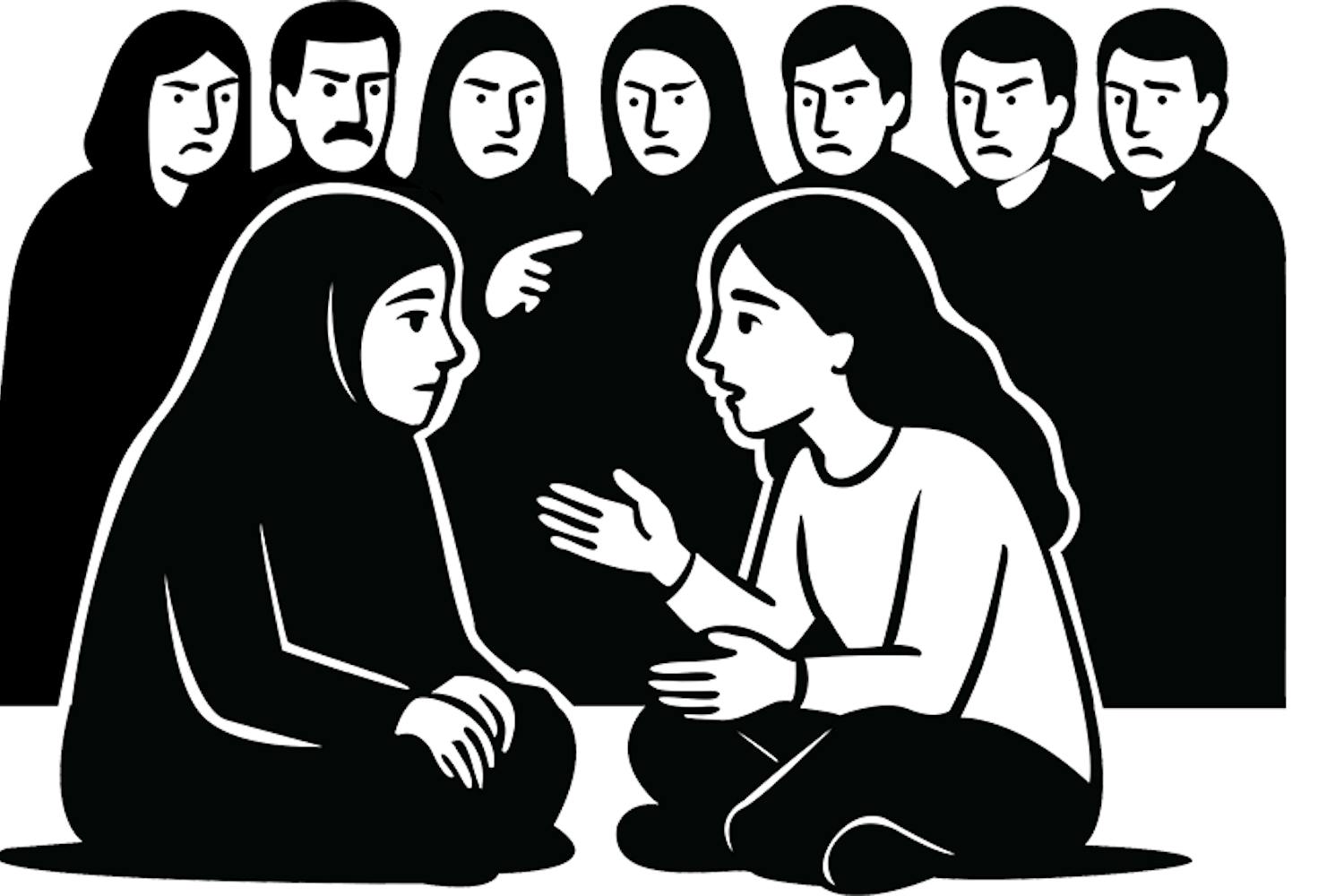In small, steamy gyms across the Valley, groups of dedicated dancer-fighters called capoeiristas practice their own form of conversation. Their language is capoeira [kah-po-EH-rah], an acrobatic style of martial arts based on 400-year-old Afro-Brazilian slave rituals.
While its origins are miles away, its message is universal.
"Capoeira is life," says Jay "Camara" Spain, who teaches capoeira classes at ASU and around the Valley. Spain, 48, started the group AXE Capoeira Arizona two and a half years ago and has been practicing the art for 10 years — 15 years after first seeing a capoeira group perform in New York City.
"The first time I saw it, I was like, 'Wow, this is really neat,' but I didn't think I could do it. How was I supposed to balance on my head like that?" says Spain, who adds that capoeira has influenced modern moves such as break dancing.
"But capoeiristas try anyway. That's the spirit of capoeira."
Spain dropped everything to train under his mestre, or master, Marcos Barrao. Spain was Barrao's first student in North America and now has 70 students of his own.
On a recent Thursday night, about 20 of his intermediate students practice at the Powerhouse Gym in Tempe for the third annual "batizado," Portuguese for "baptism." The three-day event starts on campus today with a series of workshops and ends Sunday with a demonstration at the Phoenix College Bullpit Auditorium. More than 100 master teachers and capoeiristas from the United States, Canada and Brazil will perform and compete during the batizado.
During their three-hour practice, students gather in a roda [ho-da], or circle. Booming Brazilian bass beats and repetitive African rhythms fill the room.
When the mood is right, a pair of sparring dancers meets in the middle, crouching down, a coy fierceness in their eyes.
Then they strike.
The dancers, still low to the ground, send sweeping kicks centimeters over each other's heads. They tumble around, over and under each other but rarely meet with full contact.
"Anything can happen in a roda. Sometimes it's playful, so they'll do more acrobatic dancing moves. But it can get aggressive, so they might do things that look more like fighting," says Spain.
He adds that capoeira is still used as a form of defense during street fights in Brazil.
Capoeiristas' actions are guided by the tempo of conga drums and harmonic chanting, led by the other group members.
"Sometimes the music is fast and driving, sometimes the music is slow," Spain says. "But the music controls the movements."
Spain points to the most sacred of the capoeira instruments: the berimbau. This long wooden instrument resembles a bow, with a steel string attached to each end and a hollow gourd connected at the bottom to resonate sound.
Melissa "Iuna" Rex, a capoeira student for two and a half years, holds the berimbau and chants a Portuguese folk song. The 25-year-old received her master's in dance from ASU and stands out as the clear leader of the roda.
"The roda is the most powerful thing we do," Rex says. "It's a great way to take out your frustrations. You can't say certain things in class, but you can sure say it with your body."
Spain assigns his students a capoeira name based on their personality. "Iuna" signifies the sound of a quail and was given to Rex because of her affinity for singing in the roda. Spain's own name, "Camara," means "comrade."
Spain says he became enamored with capoeira because he identified with its African roots. Slaves in Africa would often sing as they worked and would escape their reign by forming secret circles of singing and dancing, which evolved into capoeira.
"The slaves found freedom inside of capoeira," Spain says. "Inside a song, inside the music, inside the dance — that's where freedom was."
But Spain says his students participate for many different reasons, from wanting to learn a unique marital art, to needing the emotional release that capoeira often provides.
Janey "Luna" Pearl, a non-profit management and organizational studies senior, says the roda is a highly visceral process.
"It's not unusual for me to just start crying in a roda," says Pearl, who was named "Luna" after Spain caught her staring at the moon for inspiration. "It really brings up your emotions. If you have any skeletons, capoeira will bring them up."
Jose "Cavaleiro" Meraz, 24, says that aside from maintaining a harsh physical regiment, capoeira has actually helped him control his emotions. Spain gave Meraz the name "Cavaleiro," or gentleman, after he stood up to some ASU football players who were taunting Meraz and some fellow female students.
"He could have killed them with one kick," says Spain, "but instead he told them about capoeira and encouraged them to join."
Meraz failed in his mission but insists capoeira is for everyone.
"Capoeira is a dance and a fight all mixed up," he says. "You can express yourself with it and also learn how to defend yourself."
Reach the reporter at ashlea.deahl@asu.edu.
|
Third Annual Batizado e Troca de Corda with demonstration at Phoenix College Bullpit Auditorium, 1202 W. Thomas Road. 1:30 p.m. Sunday. $10 pre-sale; $12 at the door. Tickets available at Stinkweeds Record Exchange. 602-614-7367 |




